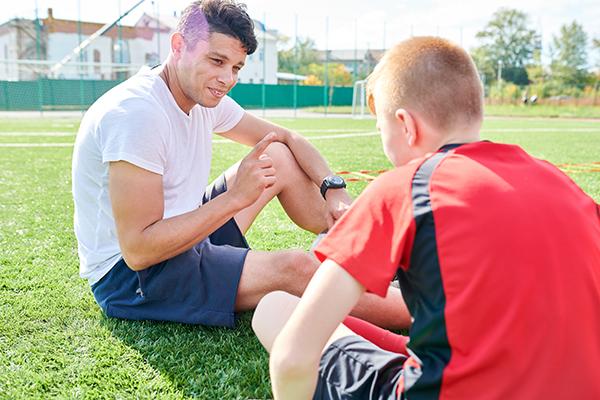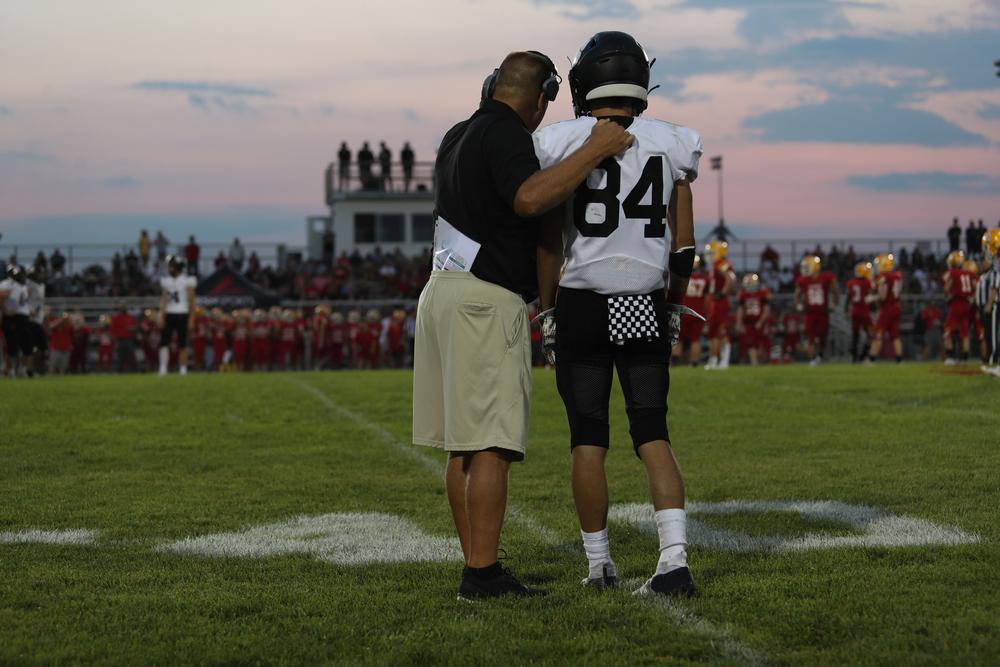 Content Warning: This article contains mentions of bullying and trauma.
Content Warning: This article contains mentions of bullying and trauma.
When it comes to dealing with misbehavior on your team, it can be tempting to label kids as ‘good’ or ‘bad’ and ‘bullies’ or ‘victims.’ But rarely is real life that simple, and more often than not, bullying behaviors are driven by a need that a child has that’s not being met.
Yes, you should step in to help the athlete who’s being antagonized by a teammate. But as a coach or a parent, you should also look beyond that specific incident to try to understand and ultimately root out bullying behaviors that exist within the team.
Nadia Kyba, MSW, TrueSport Expert and President of Now What Facilitation, explains how to talk about bullying and apply the ‘trauma-informed approach’ to bring your team closer together.
Take a trauma-informed approach
Based on her background in social work, Kyba recommends that coaches and parents address bullying behaviors through a trauma-informed approach, which focuses on an athlete’s background and the ‘why’ of their behaviors.
“It means thinking about what happened to a child, rather than what’s wrong with them,” she explains. “After an incident, think about why the athlete is exhibiting those behaviors. Think about them in the context of a whole person rather than just an athlete on a team.”
With this approach, you may be able to identify triggers behind misbehavior. “Usually kids who have experienced trauma have grown up in really unpredictable situations,” Kyba says. “One of the ways they establish predictability in their own lives is through bullying type behaviors.”
For example, having a practice go 15 minutes late may lead an athlete to act aggressively or talk back to the coach, but upon further inspection, you may realize that even something as small as an extended practice represents unpredictability and could trigger negative behaviors. Seek to understand, rather than to instantly punish. The better you can understand the needs of your athletes, the less behavioral issues you’re likely to encounter.
Get specific
 “There are so many shades of bullying,” Kyba explains. “And it can be counterproductive to describe a kid who’s making fun of someone the same way you’d describe a kid who’s shoving a teammate up against lockers. When I hear that someone is bullying, I want to know the actual behaviors.”
“There are so many shades of bullying,” Kyba explains. “And it can be counterproductive to describe a kid who’s making fun of someone the same way you’d describe a kid who’s shoving a teammate up against lockers. When I hear that someone is bullying, I want to know the actual behaviors.”
Breaking down behavior like this makes it easier to work through the problem with each athlete and create new rules for the team as a whole. “It leads toward actual conflict resolution instead of just punishing the kid,” Kyba notes. “You’re also removing the automatic stigma that comes with the label of ‘bully.’”
Avoid labels and biases
 Labeling children as any one thing can be extremely problematic. If you label a child on the team as a bully, for example, now that child will automatically be the guilty party in any conflict.
Labeling children as any one thing can be extremely problematic. If you label a child on the team as a bully, for example, now that child will automatically be the guilty party in any conflict.
“I think we use the label ‘bully’ because it simplifies really complicated situations,” says Kyba. “When there’s a bully on a team, then it’s easy for the coach to fix the problem by eliminating or targeting the bully. But that rarely works.”
Similarly, it’s important to avoid assumptions as to who the ‘problem kids’ on the team will be based on our inherent biases from on our own school experience and past traumas. “It’s easy to end up accidentally thinking ‘Oh, it’s the kid who always dresses this certain way,’ or ‘the scary-looking kid,’ or get into stereotypes around race and gender as well,” warns Kyba. Focus on your athletes’ actions, not on labeling them.
Be predictable
In keeping with the trauma-led approach, predictability is one of the best ways to combat the feelings of anxiety that often contribute to bullying behaviors brought on by past traumas. “Every child needs a stable adult in their lives, and for some, that may be their coach,” says Kyba. “The best thing you can do for your athletes is give them a sense of predictability.”
“Set transparent expectations for the entire team and have clear consequences for rule-breaking. Don’t single out kids with problem behavior. And as much as possible, set definite finish times for practice and a structure for all aspects of team participation.”
Identify the positive
 While coaches are often kept busy trying to deal with negative behaviors on the team, it’s equally important to identify and encourage athletes’ positive behaviors when they do happen. Too often, good behavior is overlooked, but for an athlete who’s struggling and continually reprimanded, praise for doing something right can make a huge difference.
While coaches are often kept busy trying to deal with negative behaviors on the team, it’s equally important to identify and encourage athletes’ positive behaviors when they do happen. Too often, good behavior is overlooked, but for an athlete who’s struggling and continually reprimanded, praise for doing something right can make a huge difference.
“It’s so important to identify the positives, especially with the kids who often get called out for the negatives,” Kyba says. “Give them opportunities to lead as a way to potentially channel that negative behavior into some positive. A lot of the time, the so-called bullies are also the natural leaders on the team, whether they mean to be or not.”
________________________________
Takeaway
While immediately addressing bullying behaviors is always step one, it’s also important for coaches and parents to further support individual athletes and foster healthier teams by understanding the triggers behind those behaviors.



